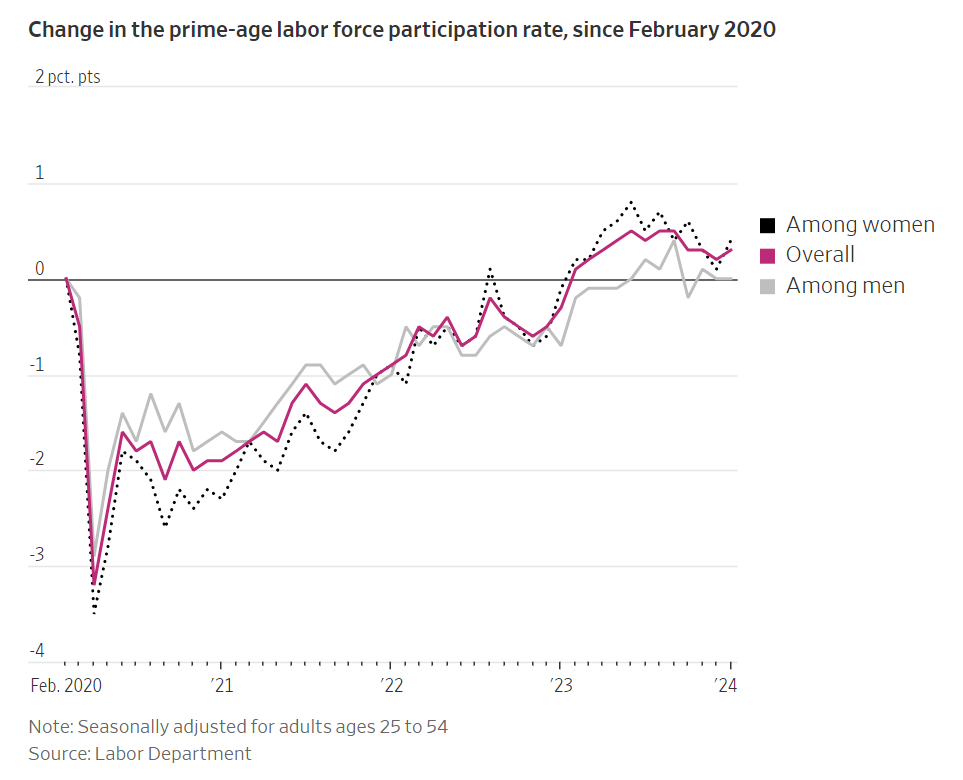Summary
- Canadian dollar set for best weekly gain since December.
- 10-Year Treasury yield spikes to above 4% from near 3.86 low Thursday.
- Traders pare Bank of England (BoE) rate cut bets, see fewer than 100 bps this year - Great British pound falls 0.5% to hit day’s low after U.S. jobs reports.
- U.S. January private payrolls increase 317,000, estimate 170,000.
- Euro currency falls from near $1.09 to below $1.08 before rebounding.
- Trump says ‘Wouldn’t’ rename Powell as Federal Reserve Chair.
- PBOC adds short-term liquidity before holidays.
- G-4 volatility curves show April policy decisions are main focus.
- Australian dollar rises on risk-on mood, hedging flows prior to sharp decline after release of U.S. jobs report.
Noteworthy
- U.S. Hiring Accelerated With 353,000 Jobs Added in January
- Unemployment Rate Steady at 3.7%
The U.S. Dollar
The U.S. economy added jobs at a robust pace in January, the latest surprise delivered by a labor market that has repeatedly defied predictions of a significant slowdown.
Employers added a seasonally adjusted 353,000 jobs last month, the Labor Department reported Friday, the strongest in a year. December’s payroll figures were also revised upward to 333,000 from 216,000, suggesting that higher interest rates haven’t cooled hiring as much as economists had previously thought.
Bond yields rose and S&P 500 futures pared earlier gains after the report was released, a sign that investors feared the strong data would prevent the Federal Reserve from cutting interest rates as soon as they had hoped.
The yield on the benchmark 10-year Treasury note climbed to 4.01%, according to Tradeweb, from 3.86% Thursday. Yields rise when bond prices fall.
The labor force grew 124,000 after accounting for the annual change to the Labor Department’s estimate of the underlying population, the Labor Department said. Without that adjustment, the labor force showed a decline. The participation rate in January was unchanged at 62.5%, with the population revisions having no effect.
Economists surveyed by The Wall Street Journal had anticipated that Friday’s report would show that the economy added 185,000 new jobs in January and that the unemployment rate would be 3.8%.
The report offers fresh insight into the U.S. economy as Fed officials are considering when to start cutting interest rates, a new phase in their effort to control inflation while avoiding a long-feared recession.
Fed Chairman Jerome Powell signaled Wednesday that rate cuts are likely later this year, though probably not at the Fed’s next meeting in March. Strong economic growth and a still-tight labor market were welcome, Powell said, as long as inflation continues to decline.
Before Friday, recent data had shown the labor market cooling in a gradual manner, with wage growth easing and the pace of hiring moderating. A large share of hiring last year came from three sectors: government, healthcare, and restaurants and hotels. Other sectors have returned to a slower pace of growth.
Meanwhile, weekly initial claims for unemployment insurance have recently jumped, a sign that layoffs might have picked up, although not to levels economists consider worrisome.
Still, demand for workers has proved much more resilient than many investors and analysts had expected, given the Fed’s aggressive rate increases.
Officials raised rates last year to the highest level in more than 20 years, but the economy, far from falling into recession, has grown at a surprisingly brisk pace. The Fed’s preferred inflation gauge was 2.6% in December, not far from the central bank’s 2% goal.
Jobs reports for January have been somewhat hard to read since the onset of the pandemic. In the past two years, job gains were well above what economists had expected, but there was speculation that the numbers might have been exaggerated by shifts in seasonal hiring patterns.
Annual revisions to population estimates can also make it difficult to compare January’s unemployment rate with last year’s numbers.
Contact Comerica Foreign Exchange
This is not a complete analysis of every material fact regarding any company, industry or security. The information and materials herein have been obtained from sources we consider to be reliable, but Comerica Capital Markets does not warrant, or guarantee, its completeness or accuracy. Materials prepared by Comerica Capital Markets personnel are based on public information. Facts and views presented in this material have not been reviewed by, and may not reflect information known to, professionals in other business areas of Comerica Capital Markets, including investment banking personnel.
The views expressed are those of the author at the time of writing and are subject to change without notice. We do not assume any liability for losses that may result from the reliance by any person upon any such information or opinions. This material has been distributed for general educational/informational purposes only and should not be considered as investment advice or a recommendation for any particular security, strategy or investment product, or as personalized investment advice.



